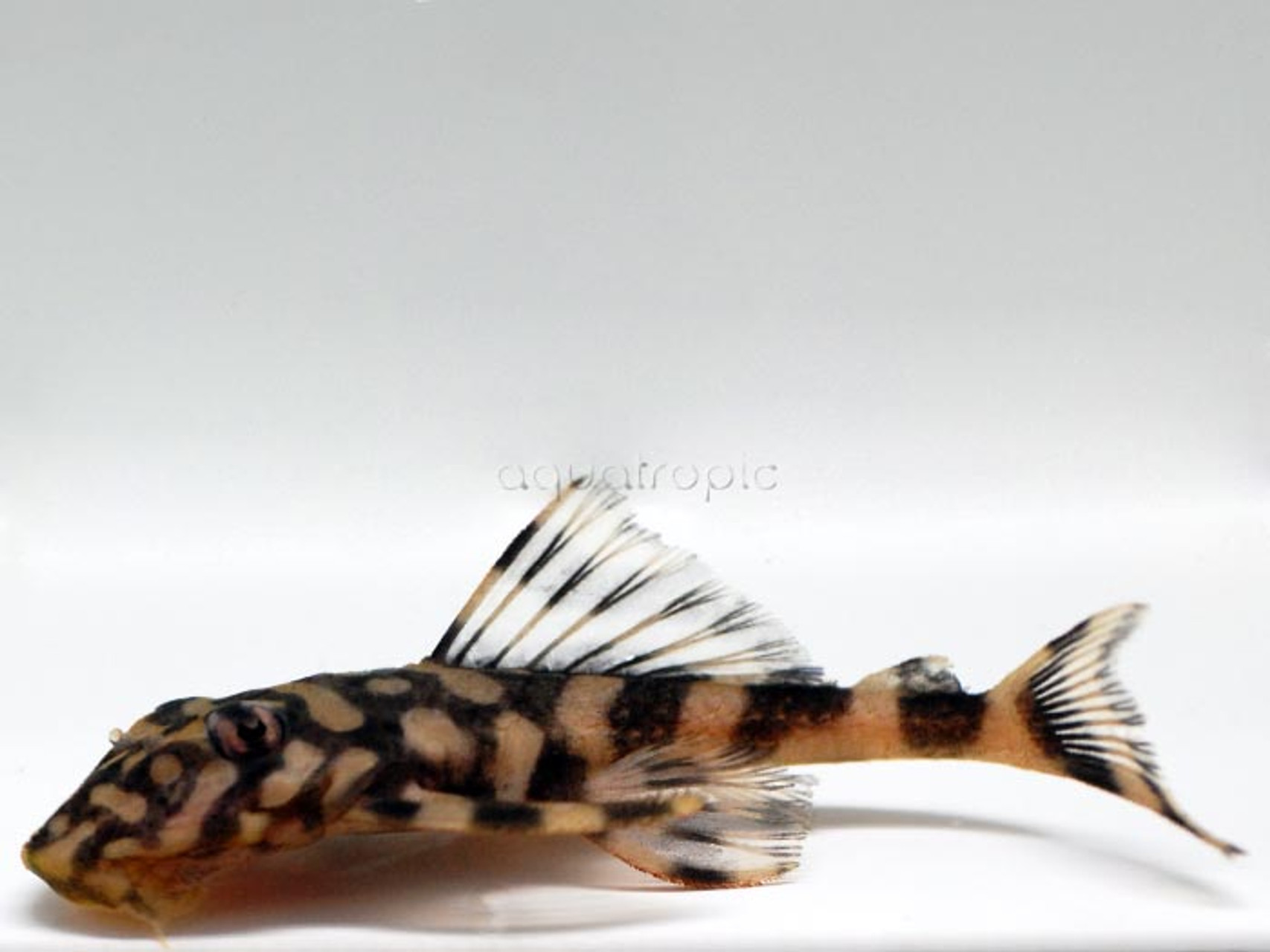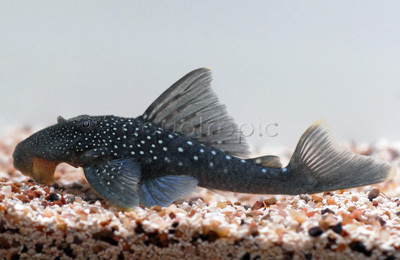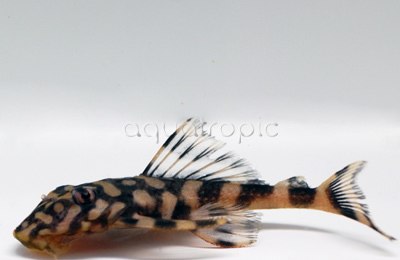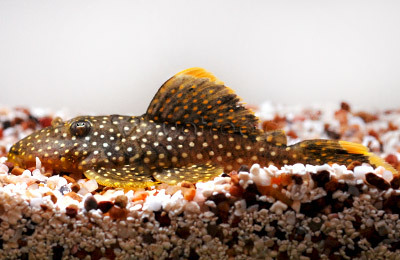Beyond Plecostomus: Exploring Loricariid Catfish Biodiversity (Part 1)

The Common Pleco (Hypostomus plunctatus) has long been one of the single most popular fishes in the aquarium trade. Combining an exotic appearance and a truly industrious appetite for algae, this fish has much to offer. But it’s important to remember that this is just one member of a very diverse group—the armored or suckermouth catfishes of the family Loricariidae—which has more than 90 genera and nearly 700 species in total. This is in fact the single largest family in the enormous catfish order Siluriformes, and, as you might expect, quite a few other examples from this group find themselves regularly exported or captively bred.
While the Common Pleco grows to be a bit of a bruiser, easily capable of reaching a foot in length, it has many relatives which reach far smaller dimensions, as well as a few which grow considerably larger. Some species are carnivorous… others are omnivorous… some specialize on submerged wood… and many more feast primarily on algal films (and the associated microorganisms). And, for those not wowed by the subdued colors of the Common Pleco, a vast array of colors and patterns can be had, from zebra stripes to polka dots and much much more. So let’s take a minute to explore the incredible biodiversity of the loricariids.

Hemiancistrus
There are somewhere around a dozen known species in this genus, perhaps with more to come, but the group is said to be poorly understood and the fishes currently classified here may not all be closely related. Two examples are regularly available, both traded under the evocative name “phantom”. The Green Phantom (H. subviridis) is a beautiful fish from portions of the Rio Orinoco which sports an olive-green body and numerous yellow spots on the forebody. The highly similar Blue Phantom Pleco (L128) is still undescribed and may be a regional variant of its green cousin. It tends to be a bit darker (often with a bluish cast) and has more numerous white spots along the body. Both grow to a modest 7 inches in length and have an omnivorous diet, making either of these a fantastic choice for a tank’s clean-up crew.

Dekeyseria
Small, attractively patterned loricariids are always in demand, and the Butterfly Plecos of the genus Dekeyseria are some of the smallest and loveliest in the family. With a maximum size of around 5 inches, these fishes are large enough to put a serious dent in any algal build-up but still small enough to fit in relatively modest aquariums. The species most often available to aquarists is still undescribed and has been given the codename L052. It comes from the Rio Orinoco and is noted for its unusual chameleon-like ability to change color to match its surroundings. If put on a dark substrate, the Butterfly Pleco can darken considerably, while a lighter substrate will help to bring out the beautiful yellow and black stripes that make this fish such a stunner.

Baryancistrus
There are only a half-dozen described species in this genus, but many more are known in the aquarium trade through their L-numbers. Included here are some of the most popular exotic loricariids available, like the Gold Nugget Pleco (B. xanthellus, L018, L081, L177) and the confusingly named Blue Panaque (B. beginni, L239). The gorgeously patterned Gold Nuggets are endemic to the Rio Xingu of Brazil, and, with their vibrant pattern of yellow spots and yellow-edged fins, make for a particularly affordable entry into the world of exotic catfishes. The maximum size is around 9 inches and an omnivorous diet of algae, vegetables and meaty foods should be offered. The considerably smaller B. beggini (max size: 3 inches) lacks some of the visual appeal of its relative, but the blue sheen of its otherwise dark body can still be quite fetching when the light catches it just right.

Hypancistrus
For loricariid fanatics, one of the holy grails in the family is the Zebra Pleco (H. zebra). This spectacular black and white fish is always in demand and typically sells for far more than most other catfishes. But don’t expect this fish to pull its fair share when it comes to cleaning your tank of algae—the Zebra Pleco is more of a carnivore and requires the addition of sinking pellets and fresh or frozen meaty foods. There are several other examples from this genus which also make their way regularly into the hands of aquarists, such as the spotted Snowball Pleco (H. inspector, L102), the wavy-lined Gypsy King Tiger (L066), Queen Arabeque (L260), Royal King Alenquer (L401) and the Orinoco Zebra Pleco (H. debilittera, L129)... the poor man’s Zebra Pleco.

Acanthicus
True to its name, the Adonis Pleco is quite the looker. Growing to a monstrous 3 feet in length, this is a species for only the most dedicated aquarist, as it requires hundreds of gallons of aquarium space when fully grown. But, for those willing to take the plunge, this is without a doubt one of the most visually impressive loricariids available. The dark body is covered head to toe (err… fin?) in white polka dots, and the caudal fin develops a pronounced lyre-like shape. It will accept nearly any food offered, but an omnivorous diet is best. It is even reported to frequent human habitations in the wild, feeding on the inevitable refuse dumped into these waterways.

Panaqolus
This genus of small catfishes is one of several unrelated groups that have taken to feeding on submerged wood, using specialized teeth to rasp away small amount of wood, along with the accompanying algae and microorganisms present. They will still nibble on algal films in an aquarium setting, but a large piece of driftwood should always be included in the tank’s decor to provide Panaqolus with this important dietary component. Several popular species are offered: the Mustard Spot Pleco (P. albomaculatus) and Flash Pleco (P. albivermes), which reach just 5 inches in length, and the even smaller Clown or Yellow Tiger Pleco (P. maccus, L104, L206).